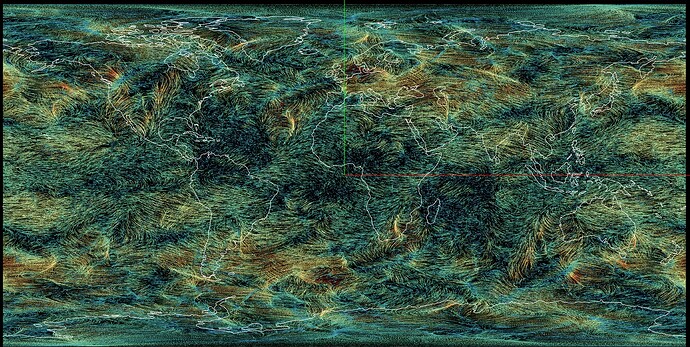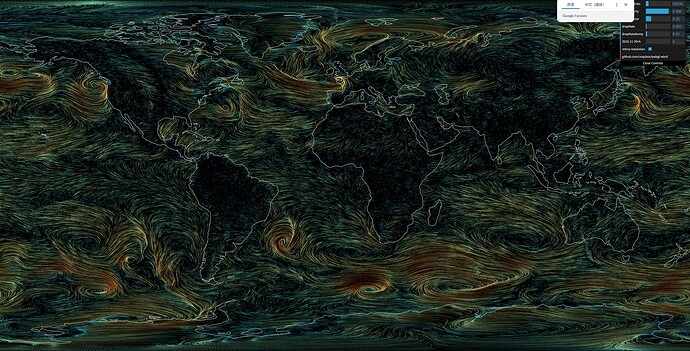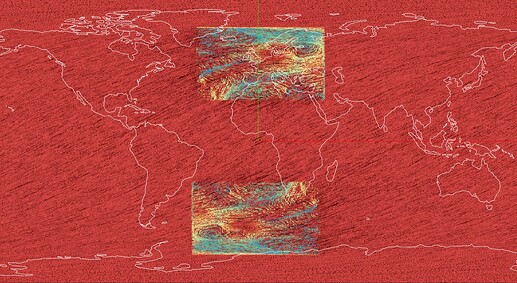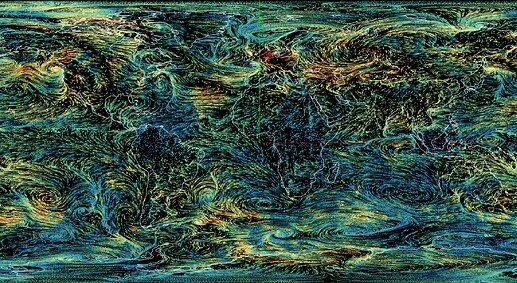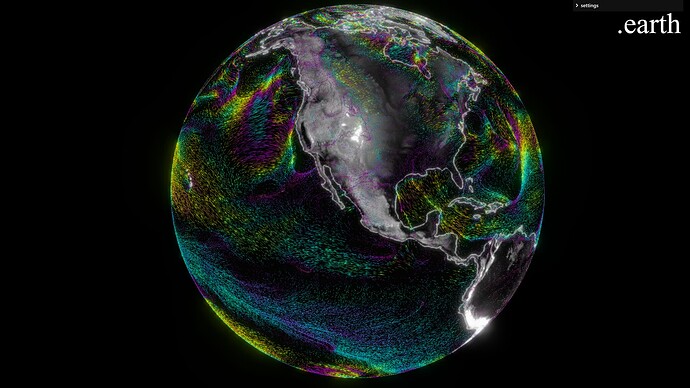I tried to use three.js R179 to implement GitHub - mapbox/webgl-wind: Wind power visualization with WebGL particles ,
I faced one problem: these wind particles’ trails overlaps with each other, the correct implementation should have no trails overlapping.
Expected to be like, no trails overlap with others:
you can checkout my implementation from
use three.js simulate wind field animation
Any help would be appreciated.
2 Likes
Tried to see the contribution of an isolated area of the wind map. So made a map like this:
The result was this:
Questions:
Is it expected to have the wind window mirrored vertically? (the upper one looks wrong)
Is it expected for the black color to generate the red wind? (most likely rgb=0, but a=1)
When I pick the correct image and overlap it with 180° rotated image, I get winds crossing just like in your result. Here is the “simulated” double image:
In the screenFrag shader, DrawWindParticles.html, line 80, does it look OK if you replace:
vec4 color = texture2D(u_screen, 1.0 - v_tex_pos);
with:
vec4 color = texture2D(u_screen, v_tex_pos);
The winds look like not crossing, but somehow they do not adhere to the continents shapes. Maybe the winds are flipped?!?
Maybe the winds look OK (except that they are sparse and too fast). Made only 3 changes:
vec4 color = texture2D(u_screen, v_tex_pos); // line 80
:
vec2 lookup_wind(vec2 uv) { // line 108
uv.y = 1.0-uv.y; // line 109
PS. This vertical flipping could be related to some flipY convention or difference, textures could be vertically flipped, sometimes
2 Likes
Thank you very much, your reply is very very helpful! I will check your suggestions
Maybe in three.js texture has flipY convention. I have made your mentioned two changes.
in screenFrag shader, vec4 color = texture2D(u_screen, v_tex_pos);
in updateFrag shader ,added line: uv.y = 1.0 - uv.y;
Then, I made change in drawFrag shader
void main() {
vec2 vPos = vec2(v_particle_pos.x, 1.0 - v_particle_pos.y);
vec2 velocity = mix(u_wind_min, u_wind_max, texture2D(u_wind, vPos).rg);
float speed_t = length(velocity) / length(u_wind_max);
now the wind speed also matchs the original one. I will commit these three changes to my github repo
1 Like
I got interested and kinda rewrote your whole thing last night:
I rewrote the simulation to get rid of the buffers for lines/points and generate them directly using InstancedBufferGeometry…
So now the only large storage is the simulation pingpong buffers themselves.
I made the shader have sphere/plane options.. I added IQ’s cosine palette for color variations…
Added some textures from the threejs earth model…
Basically stripped out everything I could to simplify it.
The only thing still bugging me is the transition across the map seam..
And sometimes if a particle dies and is reborn too close to where it died, it will make a long streak joining the 2 positions.
3 Likes
